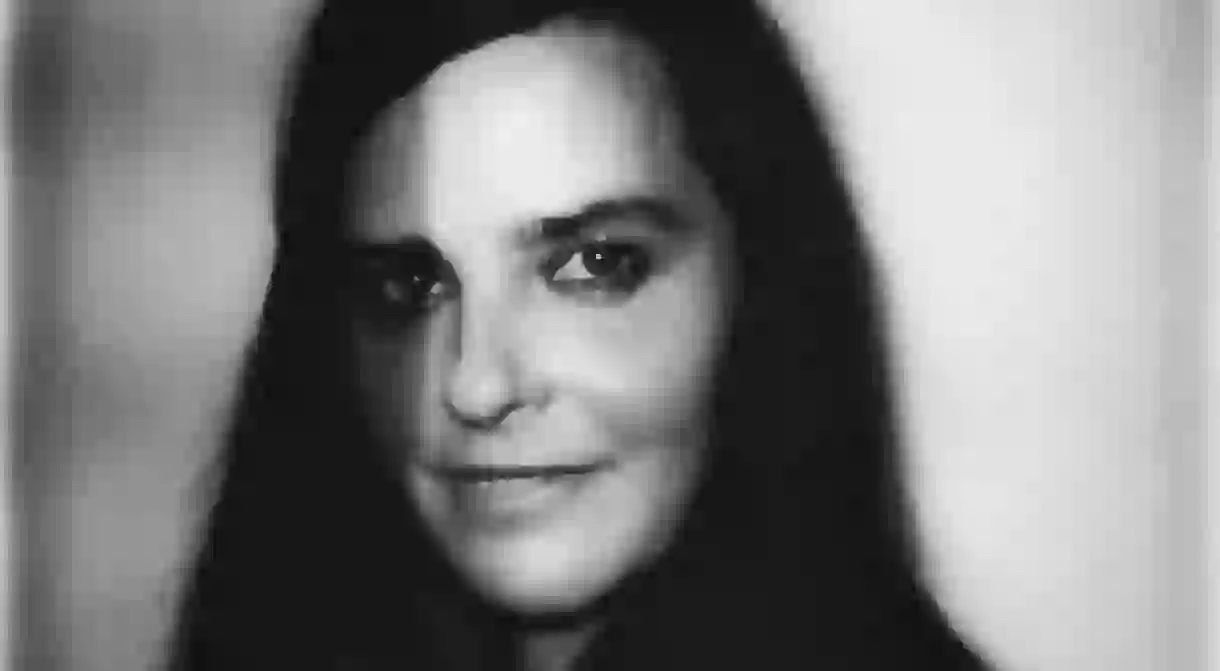Rineke Dijkstra: Portraits Of Transition

Subtle, modest, and always arresting, Rineke Dijkstra’s portraits deftly capture individuals in the process of transition. Youths, mothers, and soldiers stare from the frame, revealing themselves with little more than the warning of a frown, or the solidity of their posture. Born and educated in the Netherlands, Dijkstra is widely considered as one of the most important portrait artists living today, producing a unique body of work, spanning two decades.
Traveling across Europe and the United States, Dijkstra began her career with Beach Portraits. This comprehensive collection was originally commissioned by a Dutch newspaper, but expanded into a eclectic tour of the world’s youths, with Dijkstra developing the neutral, often classical style of portraiture that has come to typify her photography. Adolescents emerge from the sea dressed in their bathing suits. Some are confident, others shy, many showing signs of annoyance, but each face the camera straight on. The images are striking, elegantly conveying the clumsy beauty of youth – the awkward beginnings of adulthood. Using monumental scenography, Dijkstra accentuates her subjects poise, mannerisms, and expressions, hinting at the personalities and temperaments behind the photographs.
The unguarded nature of youth, and its inevitable waning, fascinates Dijkstra, directing her photography down avenues unanticipated by the artist herself. In 1994, Dijkstra photographed a Bosnian refugee, Almerisa, in a Dutch asylum camp. Originally intended as a singular edition, the shot developed into a series spanning 14 years. Dressed in traditional Baltic clothes, apparently chosen by the model, Almerisa begins as a picture of innocence – a rarity in Dijkstra’s work, with the artist avoiding clichés associated with childhood. Sporadically returning to her model, Dijkstra shot 11 more portraits, with Almerisa seated in a nondescript location throughout. The young girl, with her legs dangling from a chair, is quickly replaced by a brooding teenager dressed entirely in black. With each photograph, Almerisa grows physically and personally – her limbs coevally developing alongside her mannerisms, forming a gradient marked by her emerging self-consciousness, assertiveness, and confidence. By the final photograph, taken in 2008, Almerisa has become a mother, cradling her child in her arms. Her feet turned to the floor, in a pose reminiscent of her first encounter with the artist.
Rineke Dijkstra, Julie, Den Hagg, The Netherlands, February 29, 1994, dalla serie New Mothers [Nuove madri], 1994 #LaGrandeMadre, Palazzo Reale, Milano fondazionetrussardi.com Courtesy #RinekeDijkstra e @MarianGoodmanGallery A photo posted by Fondazione Nicola Trussardi (@fondazione_trussardi) on Aug 29, 2015 at 2:50am PDT
As in the case of Almerisa, the path to adulthood may take over a decade, while elsewhere occurring in the space of a few years – a fact documented in Dijkstra’s series Olivier. Following Olivier Silva, a young man undergoing vigorous military training, the series examines how discipline and dedication can rapidly transform a fresh-faced youth into hardened soldier. Beginning the series in 2000, Dijkstra photographed the then 18-year-old Silva moments before he enlisted in the French Foreign Legion. Dressed in casual, civilian clothes, Silva is uneasy before the camera, his expression somewhere between hope and worry. In the subsequent pictures, shot over three years, Olivier rises from new recruit to combat-ready serviceman. He gradually acquires authority, his stance and expression tightening. In the final photograph, taken before his deployment in Gabon, Olivier’s eyes refuse to betray him, revealing only control and assurance.
Olivier, Camp Rafalli Calvi, Corsica 2001 by Rineke Dijkstra @cactusdigital #uniform #portrait #men #soldier #olivier #corsica #2001 #rinekedijkstra #fashion #unfashion #inspiration #moment #goodlooking #redrum #murder #daylight #like #instagram #instamoment #instaday #instamorning A photo posted by CACTUS DIGITALE (@cactusdigital) on Aug 22, 2015 at 1:34am PDT
Portraiture has always relied on symbolism to expand the breadth of its gaze – a technique Dijkstra uses modestly and proficiently. Shot shortly after childbirth, the series Young Mothers depicts three women holding their newborns tightly against their naked breasts. Shielding their infants from the camera, the mothers stare directly at the artist, exuding protectiveness and serenity. All three bear visible signs of labor: a stream of blood down Telca’s leg, a caesarian scar across Saskia’s stomach, and a sanitary towel worn under Julie’s medical panties. All are symbols stressing the pains of childbirth that have become extraneous, with the arrival of a child.
In Buzz Club, Liverpool, UK/Mystery World, Zaandam, NL, Dijkstra returns to adolescents, this time using video as her medium. The film, presented as a two-channel video installation, places footage from two nightclubs in Liverpool and Zaandam side by side. Young dancers, isolated from the rest of the club, move to heavy electronic music. Although both streams show teenagers acting as expected in a nightclub – smoking, drinking, chewing gum – they differ noticeably. In the Netherlands, many belong to the gabber subculture prominent during this period – their heads shaved, dressed in sports clothes, and occasionally breaking into a hakken shuffle. Clearly, they share an identity, affording them a certain bravado. The English are more reserved, taking time to adjust to the camera. One girl, dressed in white, slowly begins to dance, her movements gradually accelerating until she stops suddenly mid-song, walking out of shot as though she’d grown bored of the repetitive bass. Filmed over numerous nights, Dijkstra edited the footage to appear as though occurring simultaneously, and the film almost follows a narrative, with the dancers seemingly interacting with one another, although separated by time and location.
Still living and working in Amsterdam, Dijkstra has received numerous awards for her contribution to photography and filmmaking, and her work has been collected by many of the world’s major museums of modern art, including the Tate, MoMA and Stedelijk.













